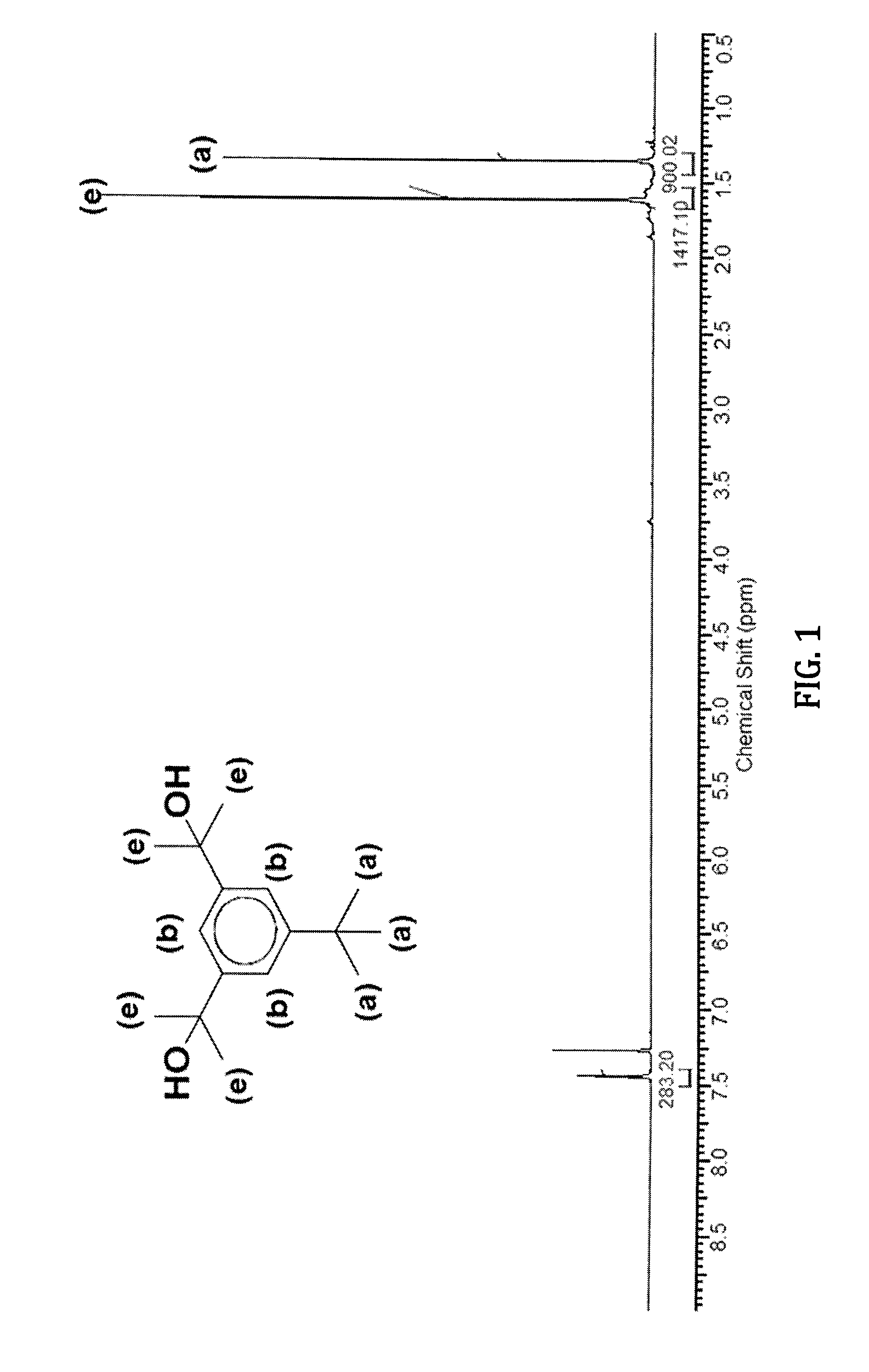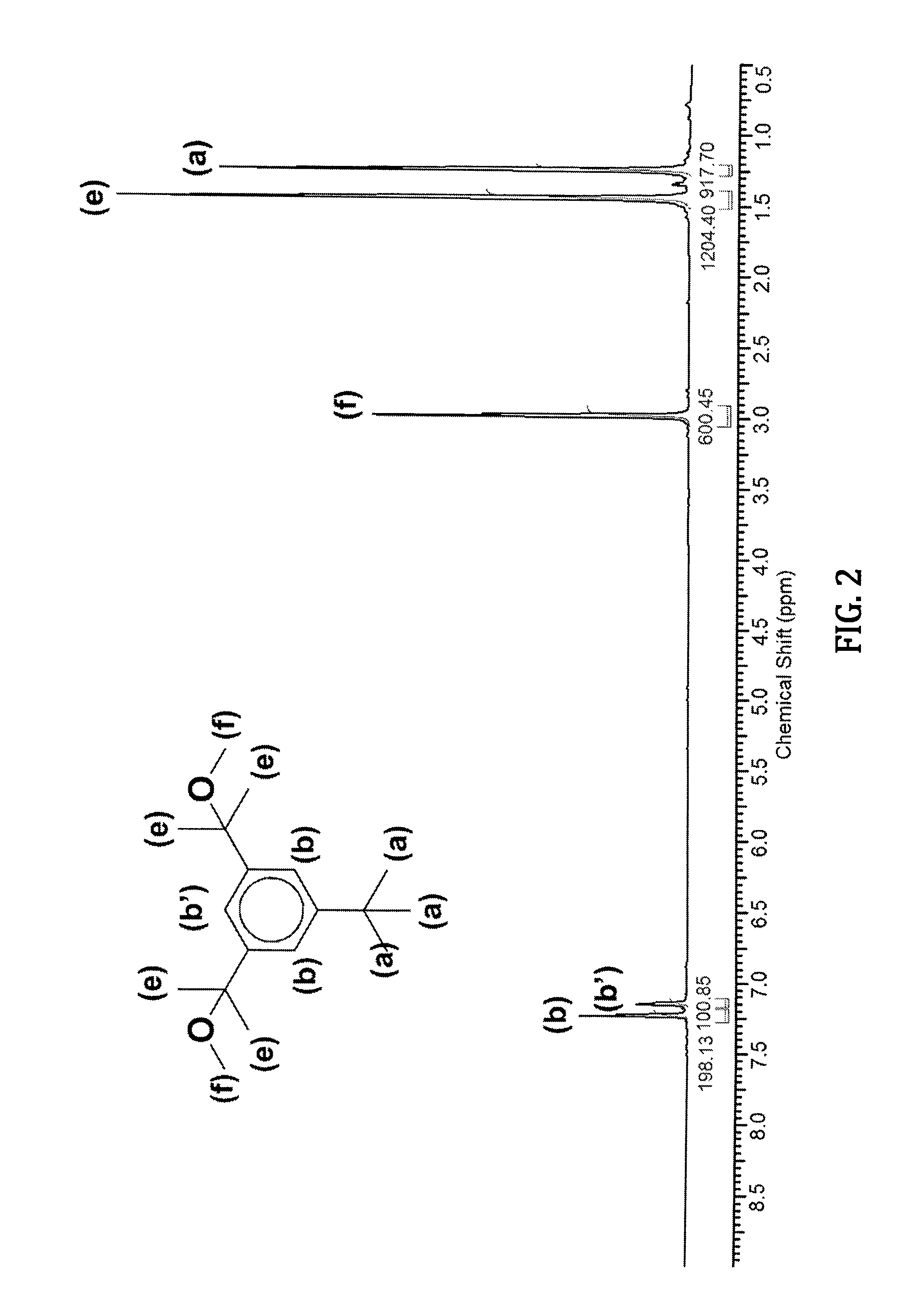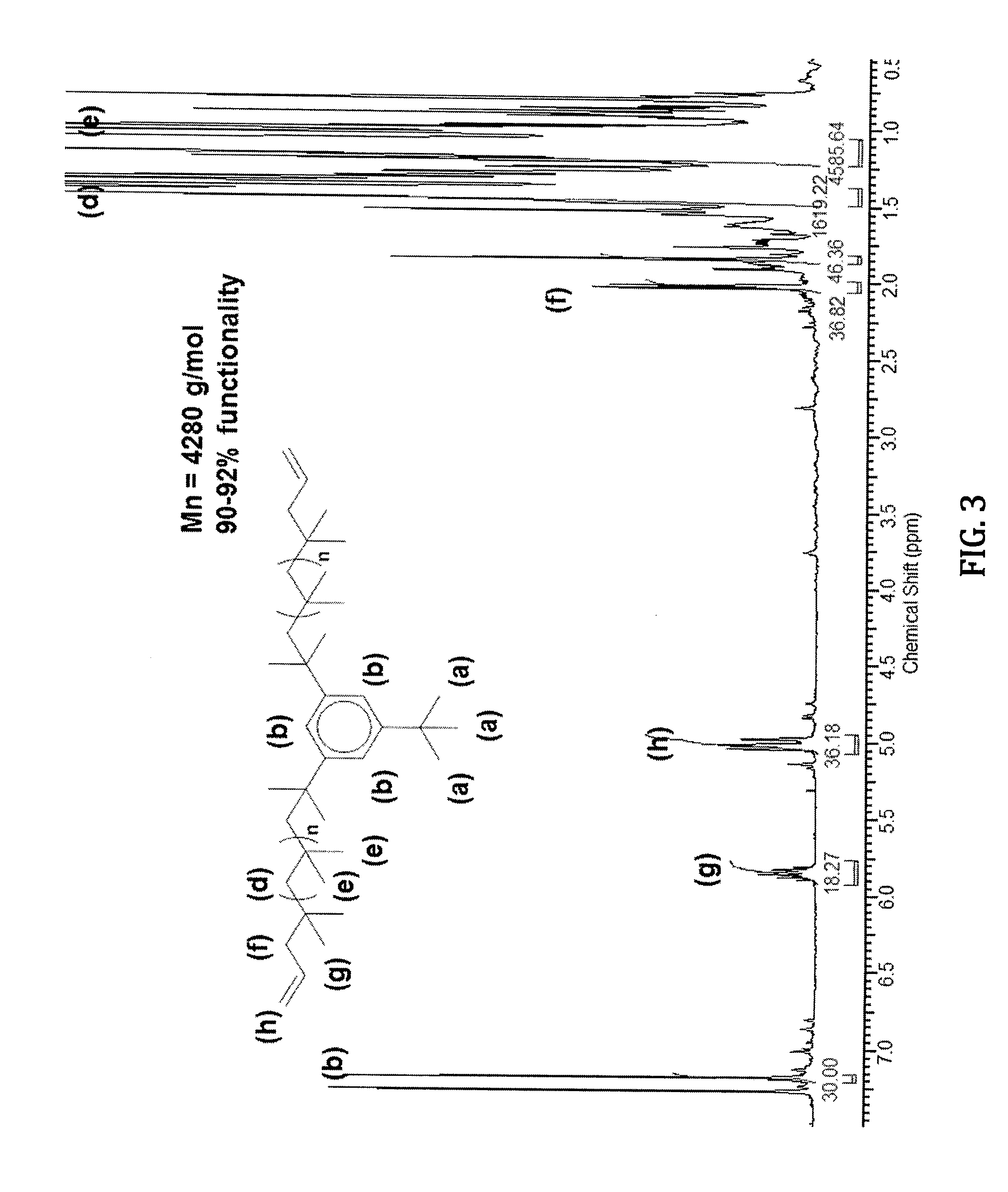Preparation of polyisobutylene-based polymer networks by thiol-ene chemistry
- Summary
- Abstract
- Description
- Claims
- Application Information
AI Technical Summary
Benefits of technology
Problems solved by technology
Method used
Image
Examples
example 1
Synthesis of the Difunctional Initiator
[0070]As shown in Scheme 5 below, the synthesis of the bi-functional initiator 5-tert-butyl-1,3-(2-methoxy-2propyl)benzene (TBDMPB) was undertaken in three steps.
[0071]The first step was the synthesis of dimethyl-5-tert-butyl-1,3-benzyl dicarboxylate (XXXI). Thus, 3,5-di-carboxyl-1-tert-butylbenzene (35.52 g, 0.16 moles) was esterified by refluxing for 48 h in CH3OH (700 ml, 17.5 mL) in the presence of concentrated H2SO4 (68 mL). The mixture was cooled to room temperature, stored at 0° C. overnight, the solid was filtered and washed with water until the filtrate was acid free. The wet solid was freeze dried, dissolved in 200 mL THF, dried over MgSO4 overnight, and filtered. The solvent was evaporated and the product was recovered. Conversion was 97%. 1H NMR spectroscopy (FIG. 3) showed resonances of the methyl protons of the tert-butyl group (1.28 ppm), the methyl protons of the ester groups (3.9 ppm), and the aromatic protons (8.20-8.50 ppm).
[...
example 2
Preparation of U-PIB-U where U=V′ / E
[0076]U-PIB-U where U=V′ / E (V′ / E-PIB-V′ / E) can be readily obtained by initiating the polymerization of isobutylene with dimethyl-5-tert-butyl-1,3-benzyl dicarboxylate (DMTBBDC) difunctional initiator (XXV) under conventional (non-living) cationic polymerization conditions. A representative procedure to prepare V / E-PIB-V / E (Mn=3000 g / mol) is shown in Scheme 1, above and may be carried out in two steps as follows: First, polymerization of isobutylene with a DMTBBDC / TiCl4 initiator system is carried out under a nitrogen atmosphere at −80° C. Thus, into a 500 mL round bottom flask equipped with magnetic stirrer are placed 51 mL hexane and 30 mL CH2Cl2 and the stirred system is cooled to −80° C. Then solutions of 0.04 g ditertiarybutylpyridine (DTBP) in 4 mL hexane, 0.31 g DMTBBDC in 5 mL haxane, and 6 g isobutylene are added and the system is stirred for 5 min. The polymerization is initiated by the addition of 6.0 mL (1.0 M) TiCl4. After 30 min the po...
example 3
Synthesis of Allyl-Telechelic PIB (A-PIB-A) Using the TBDMPB Initiator
[0077]A representative strategy for preparing the allyl-telechelic PIB (A-PIB-A) using a TBDMPB initiator is set forth in Scheme 6 below.
[0078]The polymerization of isobutylene was carried out in a high vacuum / dry nitrogen line at −80° C. as follows. Into a 500 mL round bottom flask equipped with a magnetic stirrer were placed 180 mL dried and distilled hexane, 120 mL dried and distilled dichloromethane, and ditertbutylpyridine (DTBP)(1.25×10−3 mol), and the system was cooled to −80° C. Under strong stirring, 1.25×10−2 mol of the TBDMPB initiator (XXV) was added and over a period of 5 min. Then 0.45 mol of isobutylene was added followed by the immediate addition of 3.75×10−2 mol of TiCl4. The polymerization was allowed to proceed for 60 min and then terminated with 0.25 mol distilled and prechilled allyltrimethylsilane (ATM) (XXXIV). After 30 min, the dichloromethane was evaporated under reduced pressure, the prod...
PUM
| Property | Measurement | Unit |
|---|---|---|
| Length | aaaaa | aaaaa |
| Molecular weight | aaaaa | aaaaa |
| Aromaticity | aaaaa | aaaaa |
Abstract
Description
Claims
Application Information
 Login to View More
Login to View More - R&D
- Intellectual Property
- Life Sciences
- Materials
- Tech Scout
- Unparalleled Data Quality
- Higher Quality Content
- 60% Fewer Hallucinations
Browse by: Latest US Patents, China's latest patents, Technical Efficacy Thesaurus, Application Domain, Technology Topic, Popular Technical Reports.
© 2025 PatSnap. All rights reserved.Legal|Privacy policy|Modern Slavery Act Transparency Statement|Sitemap|About US| Contact US: help@patsnap.com



